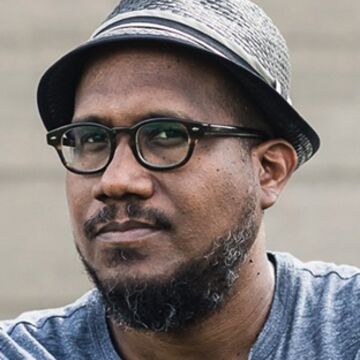

Andres Luis Hernandez
Associate Professor
Contact
Bio
BArch, 2001, Cornell University; MA, 2004, School of the Art Institute of Chicago. Exhibitions: Columbia College Chicago Glass Curtain Gallery; University of Chicago Reva and David Logan Center for the Arts; University of Chicago Arts Incubator in Washington Park; Blanc Gallery; Cobalt Studio; Highland Park Art Center; Museum of Science and Industry; National Public Housing Museum. Projects: Urban Vacancy Research Initiative; Revival Arts Collective; Chicago Park District/TRACE Program. Awards: University of Chicago Arts and Public Life/Center for the Study of Race, Politics, and Culture Artist-In-Residence; Propeller Fund; Cornell University Robert James Eidlitz Travel Fellowship.
Personal Statement
I am an interdisciplinary, creative practitioner who researches and produces critical readings and alternative imaginings of the physical, social, and cultural environments we inhabit. Working both independently and collaboratively, I explore ways in which private and public spaces are used to promote and sustain injustice, and advocate for the equitable planning, usage, and stewardship of public spaces for the benefit of all. This work often takes the form of archival research, writing, public programming, participatory workshops, creative place-making, and ephemeral interventions and performances within the built environment.
The built environment informs my research interests and creative production, and this is due to my initial education and professional training in the field of architecture. While I am not a licensed architect, I consider the interpretation and shaping of space as central to my work. Equally informing my practice is the history, material and visual culture, and creative production of African-Americans during their transitions to urban contexts through the Great Migration, and their struggles against inequity during the Civil Rights Movement and beyond. Lastly, the refreshing inventiveness and creative activism of youth and everyday citizens constantly pushes my understanding of our world, and I am continuously grateful for that.
As a native Chicagoan, I am continuously inspired by the physical landscapes of the city, as well as the social histories of these diverse spaces. Chicago's urban fabric, and the experiences of African-Americans constructing, navigating, and resisting that fabric, are source material for my creative and pedagogical practices. Through community-based work with youth and adults, and independent studio-based practice and research, I position Chicago's built environment as fertile territory for public dialogue and collective social action. In the end, I am interested in connecting citizens to learn about, envision, and create the communal spaces they truly desire for the city.
Current Interests
Over the last several years, absence and emptiness have been themes in my work given my interest in vacancy as a problematic condition in urban contexts rooted in economic crisis: vacant storefronts, vacant homes & properties, vacant land, etc. Vacancy is experienced firsthand through our navigation of urban environments, and secondhand through representations of these spaces using visual media such as photography, film/video and maps. Thus we come to know vacancy both through its physical reality and its visual representation: both work to "fix" our ideas about what was, what is, and what could be within these vacant spaces. What becomes "fixed" through these particular experiences of vacancy are our conceptions of the urban as a space of deficiency, as a space that lacks order, civility, values, stability, etc. These myopic conceptions of the urban birth intervention strategies that set out to "fill in the deficiency gap" in ways that ignore the potential of existing local methods. My interest then is in shifting the paradigm of vacancy from one of deficiency and lack to one of opportunity and imaginative possibility. If we take time to reflect, not on what is absent, but on what opportunities are provided through absence, we position ourselves to be radically creative in re-imagining our communities for the greater good. My work considers how we might move thinking about the urban context as an absent presence to a strategic, present absence.
I address these and other related issues through a variety of speculative and practical means. As part of an arts residency several years ago, I created the Urban Vacancy Research Initiative (UVRI), an ongoing endeavor that serves as both a performative component of my creative practice, and actual qualitative research with human subjects in public settings and exhibition contexts. My work through UVRI revolves around four main activities: collaborative mapping of communities in which vacancy is a significant condition; walking tours within these communities to share stories of what was once present; public forums to gather citizens to discuss critical issues within these communities; and finally, collecting data in the form of interviews, oral histories, public polling, etc.
In 2011, with several close friends and colleagues, I co-founded the Revival Arts Collective (RAC), a network of citizen activists committed to using arts and culture as a catalyst for community redevelopment in Chicago. Through RAC, we have worked collaboratively to increase citizen dialogue and participation in local revitalization efforts using design and the visual and performing arts as catalysts. To date, our work has manifested in Chicago's Bronzeville and Woodlawn neighborhoods, urban areas where many physical and economic improvements were planned, but have unfortunately stalled or slowed to a halt. Using strategies such as civic dialogues, micro-grantmaking, and creative placemaking, RAC considers creative, alternative models to mainstream community economic development efforts, while encouraging active citizen engagement in the process.